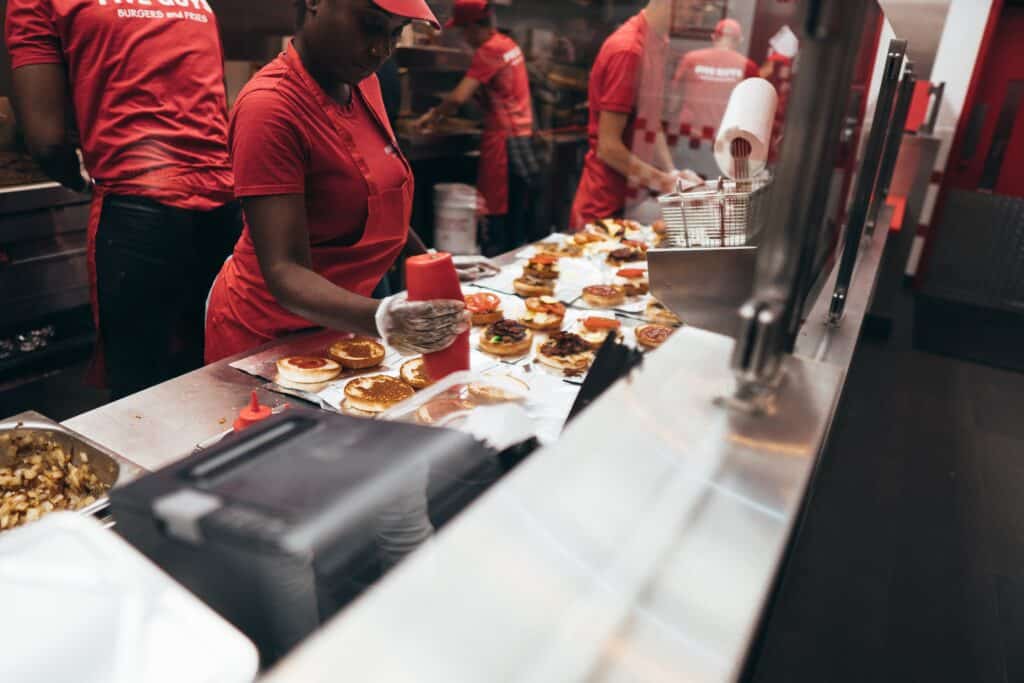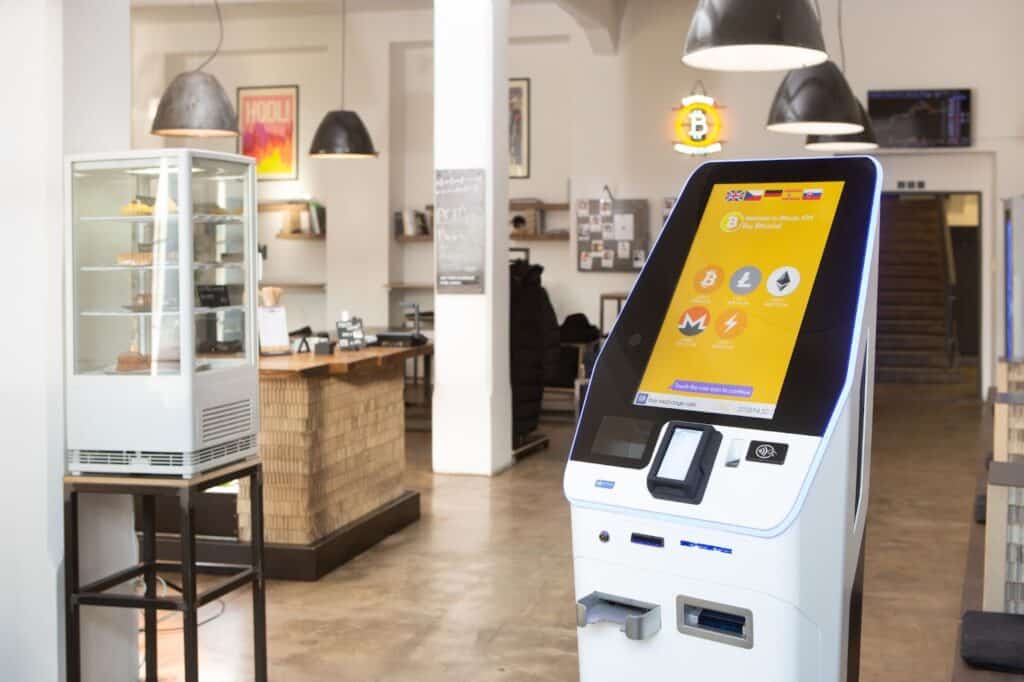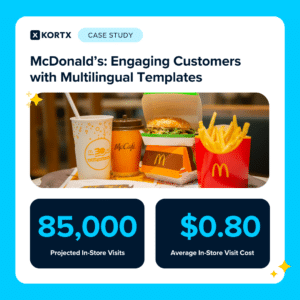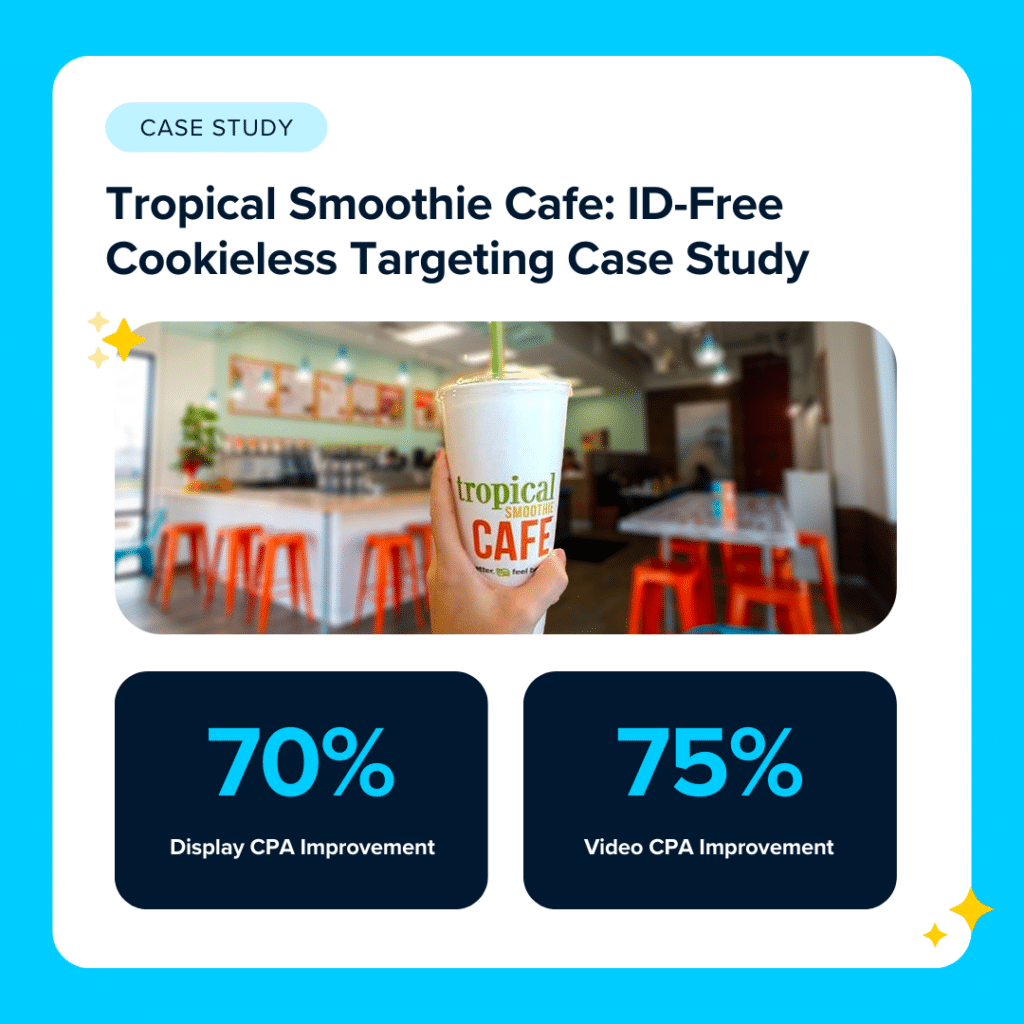Experiences refined for people
Experiences refined for people
With the market size of the US quick service restaurant (QSR) industry at $331.41 billion in 2022, staying ahead of the competition requires more than just serving food fast.
Success hinges on understanding consumer needs and trends and implementing marketing strategies that can build lasting connections.
This article will explore 8 QSR marketing strategies to help your business stand out, connect with your target audience, and cultivate a loyal customer base.
⚡ 54% percent of adults say purchasing takeout or delivery food is essential to how they live, including 72% of millennials and 66% of Gen Z adults.
Quick service restaurant (QSR) is the industry term for a fast food restaurant. These restaurants focus on speed and affordability.
Fast Casual Restaurants provide a more premium dine-in experience with healthier options and a higher price point without full table service.
Here’s a breakdown of the differences:
🍟 Quick service restaurants (QSR)
🌯 Fast Casual Restaurants
While QSRs are built for speed, catering to those needing a quick and affordable meal, Fast Casual Restaurants provide an alternative for customers looking for higher quality dining experience without the formality or price point of a full-service restaurant (FSR).

Unlike traditional restaurants, QSRs heavily invest in online ordering platforms and mobile apps, concentrating their marketing efforts on driving online orders. They measure success through specific metrics such as return on ad spend (ROAS) and revenue, which require constant monitoring and data analysis.
In scenarios where online ordering is limited, QSRs shift their marketing focus to attracting physical foot traffic. This involves engaging advertisements and promotions to lure in customers for quick, on-the-spot purchases.
Also, different restaurant types cater to distinct demographics.
Example: A QSR like Taco Bell targets individuals on the move, such as families seeking quick and convenient meals.
A fine dining establishment might appeal to a different demographic with higher household incomes or specific dining preferences.
Different restaurant types also require tailored approaches.
Example: A QSR restaurant might use TikTok for a youthful audience, while a rural gastro pub targeting an older demographic might use Facebook.
Other factors, such as location, menu offerings, and ordering channels, also influence marketing decisions. For example, Tropical Smoothie Cafe may appeal to health-conscious individuals, busy families, and young festival-goers.
With the right marketing strategies, you can reach your intended audience and create lasting impressions and dedicated customers. Here, we review our top strategies to help maximize your brand’s potential and set you on a path to sustained success.
Customers who enter your restaurant premises are likely to make a purchase. Marketing to them requires speaking to where they are in their buying journey.
Examples include:
A primary objective of in-store marketing is gently guiding customers towards purchasing additional items or more premium options.
You can strategically place promotional materials while customers are in line, at the counter with signs by the cash register, or at self-serving kiosks showcasing combo meals or add-ons.
Self-service kiosks work great to:
And post-COVID, around 65% of customers prefer restaurant kiosks over traditional ordering systems due to shorter wait times and the ability to quickly find their preferred items.
Customers who have simple, seamless experiences are more likely to return.

Technology drives the QSR customer success trend in 2023, with many brands investing millions of dollars in technology innovations.
Marco’s Pizza plans to invest in a cloud-based proprietary tech platform called Marco’s Order Management System (MOMS). The ordering system allows customers to order:
They also plan to invest in other technologies to enhance the customer experience, like voice-to-text ordering and using AI and machine learning to generate automated promise times.
Burger King (BK) is also heavily investing in technology. According to CMO Fernando Machado, BK wants to use technology to make customers’ lives easier by creating seamless apps, improving drive-through services, and developing partnerships with delivery services.
Studying foot traffic patterns offers QSRs valuable insights to enhance their marketing strategies. These studies involve analyzing the typical purchases made by customers within the store.
Example: One of our QSR clients sees $16 for every customer visiting in-store so whenever a customer’s presence is detected within their store premises, they attribute a value of $16 to that engagement.
Attributing value to in-store customer presence allows a QSR to measure in-store revenue, assess the physical store’s success, and optimize strategies for a better return on investment (ROI).
Dynamic display ads can automatically adapt and showcase particular products or offers in response to user actions, demographics, and even time of day.
Dynamic display ads offer movable graphic elements like video, animated images, or interactive elements. These elements can adapt based on user behavior or preferences.
In these time-sensitive McDonald’s display ads, the morning featured an image of a Sausage McMuffin with breakfast-themed copy, while later in the day, the ad shifted to highlight lunch and dinner offerings.

QSRs can also use dynamic display ads for instant promotions or to highlight new menu items.
🍟 Related Article: Win the Battle for Attention: Interactive Ads in QSR Marketing: Learn how dynamic creative ads can create impactful campaigns for your ideal customers.
A full-funnel strategy offers a nuanced approach to cater to different customers, from existing ones to those who haven’t heard of your brand before.
For each stage, you can employ a different media tactic. Here’s what this might look like:
Using a full-funnel approach creates a tailored pathway, guiding potential customers from initial interest to final purchase.
Loyalty programs can drive sales and provide fast-food restaurants with new channels to interact with guests. But, loyalty programs must stay a company-wide focus.
What are QSRs doing wrong with loyalty programs?
“A lot of restaurants launch loyalty programs with good intentions; they talk about the benefits and train staff to explain those benefits to guests, but then they stop training. After three or four months, new employees aren’t talking about the program with guests.”

If a company’s focus changes, loyalty program registrations taper off, and QSRs see minimal results.
To succeed with your loyalty program, concentrate on the customers most inclined to convert, specifically the medium- to low-frequency customers.
Example: Six months after Peet’s Coffee re-launched its Peetnik Rewards with Paytronix, membership soared by 350%, loyalty-linked checks grew by 47%, and one top-performing offer drove over 1.5% of the brand’s retail sales.
Before the relaunch, Peet’s had been guessing what they offered and had minimal insight into how its loyalty program performed. With Paytronix, Peet now tests and measures everything with control groups, so they know how to structure offers for success.
As our world becomes more tethered to phones, ordering apps provide an opportunity to market to customers in the palm of their hands. Customers can place orders on the go, saving time and avoiding long lines.
⚡ One survey found that 67% of an average QSR’s revenue comes from food orders placed either online or over the phone.
Apps can suggest add-ons and specials, customize menu selections, remember favorite orders, and offer real-time tracking, increasing customer satisfaction.
Analyzing app data can help predict customer demand so you can optimize your inventory accordingly.
Investing in an ordering app is not just about staying current with technology; it’s about embracing a customer-centric approach that aligns with modern consumer behavior.
Successful QSR marketing engages customers on a deeply emotional level and provides a personalized experience.
How can QSRs better engage customers?
“To create real engagement, brands need to surprise and delight their loyal customers in ways that feel memorable on an emotional level. The importance of personalized service, anticipating what customers may like, and letting customers know they are valued is stronger than ever. The challenge for most operators today is in how to leverage technology to provide that personalized experience and drive behavior at scale.”
Using insights from First-Party data, QSRs can discover what customers typically order or prefer, enabling them to offer targeted deals or suggest new items, thereby fostering loyalty and repeat business.
⚡ A recent study found that 87 percent of loyalty program members are comfortable with activity tracking in exchange for a better experience.
However, leveraging 1P data in QSR marketing poses challenges. Fragmentation in data sources, integration with existing systems, and ensuring privacy and compliance with regulations can be complex tasks.
Axon Audience Manager transforms these challenges into opportunities by offering granular insights into campaign performance and driving revenue for QSRs through precise audience segmentation.
Here are a few ways it can do that:
Axon turns valuable customer data into actionable strategies, boosting personalization and localization and increasing the success of QSR marketing campaigns.
How does Axon support QSR advertising?
“Through advanced segmentation capabilities, Axon helps QSRs manage their customers’ digital advertising experience efficiently and increases the impact on revenue attributed to that advertising. Whether delivering special offers based on user profiles that drive brand loyalty or modeling a segment of HVC to power your prospecting efforts, 1st party data utilization is a prerequisite for a brand’s digital presence.”

QSRs must understand their unique cultural nuances and language preferences to engage with multicultural and multilingual customers. This involves comprehensive market research to identify key demographics within different regions.
Example: A QSR in California might need to focus on Spanish-speaking customers, while one in Dearborn, Michigan, might focus on Arabic-speaking customers.
Each set of creatives should be customized to resonate culturally and linguistically with each target audience.

McDonald’s multicultural ad with KORTX. KORTX partnered with McDonald’s to connect with diverse cultural groups in specific U.S. QSR locations.
Leverage programmatic advertising to deliver localized content effectively. This technique allows QSRs to target ads based on geographic location and demographic data, ensuring that the right message reaches the right audience.
Example: A rich media ad campaign in Texas might include both English and Spanish versions, depending on the specific demographics of the area.
Align promotions and special offers with cultural events and holidays relevant to the target demographic. For instance, offering special menu items or discounts during cultural festivals can engage and show respect for different cultural groups.
Partner with local community leaders and influencers within target cultural groups. The community will feel represented, and the message may better resonate with their preferences.
🔍 Case Study: Engaging McDonald’s Customers with Multilingual Templates
Learn how McDonald’s partnered with KORTX for their multicultural display and rich media advertising. KORTX conducted thorough market research to understand cultural preferences without biases to reach the right audience with the right message.

By implementing these strategies, QSRs can create a more inclusive brand image and expand their market reach.
Advertising is highly competitive and fast-paced, so you should partner with a specialized agency with a deep understanding of QSR marketing.
QSR marketing agencies understand consumer behavior, market trends, and competitive dynamics to execute strategies tailored specifically to the fast-food and casual dining sectors.
🔍 Case Study: Tropical Smooth Cafe: QSR Cookieless Targeting
Read about how KORTX helped Tropical Smoothie Cafe drive a 70% CPA (cost-per-acquisition) improvement in display advertising.

Learn more about KORTX and contact us about your QSR marketing needs.
Committing to marketing for your quick service restaurant isn’t just an immediate solution—it’s a long-term strategy for growth and stability.
The marketing methods we outlined can help you gain immediate returns but also can foster enduring success for your QSR business. Customer loyalty will deepen, word-of-mouth will spread, and your brand will attract new devotees who become its most loyal base.
Over the past 8 years, we’ve partnered with leading national QSRs, helping them to grow through custom, data-driven strategies.
Sam Wilson is a Sr. Account Executive at KORTX. He brings over a decade of experience working across various verticals on both regional and national campaigns. Sam’s expertise lies in cultivating strong client relationships, devising strategic campaigns, and delivering measurable results that exceed exceptions.
From us to your inbox weekly.